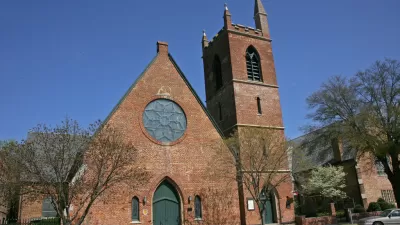New research shows areas with a heavy concentration of commercial offices experience 40 percent higher crime rates than neighborhoods that mix residential and commercial uses.

According to an article by Kaley Overstreet in Arch Daily, “mixed-use spaces do more than just create a diverse array of experiences in cities- they might also help contribute to lower crime rates.” Mixed-Use neighborhoods, writes Overstreet, “enhance social connections and promote public transportation, while also encouraging the themes of ‘live, work, and play’ in one concentrated zone.”
According to Overstreet, “In a study published under the University of Pennsylvania Law Review, data showed that it’s more likely that neighborhoods with local cafes, bars, offices, and residential areas are inherently more likely to have more ‘eyes on the street’ at more hours of the day. The collective public surveillance may deter criminals.” In the same study, “The areas where commercial offices were heavily focused experienced over 40% more crime than in other neighborhoods, especially those that included residences.”
The research concluded that it makes sense that residents may feel a greater sense of ownership for the neighborhoods where they live versus neighborhoods where they solely work, and when those two have some sort of overlap, people still feel protective of the bars, restaurants, and stores that they consider to be in their neighborhood.
Overstreet points out that “What this tells urban planners and architects is that zoning laws may be a contributing factor and an important tool for helping prevent crime in cities.”
FULL STORY: How Mixed-Use Neighborhoods Can Reduce Crime Rates

Maui's Vacation Rental Debate Turns Ugly
Verbal attacks, misinformation campaigns and fistfights plague a high-stakes debate to convert thousands of vacation rentals into long-term housing.

Planetizen Federal Action Tracker
A weekly monitor of how Trump’s orders and actions are impacting planners and planning in America.

In Urban Planning, AI Prompting Could be the New Design Thinking
Creativity has long been key to great urban design. What if we see AI as our new creative partner?

King County Supportive Housing Program Offers Hope for Unhoused Residents
The county is taking a ‘Housing First’ approach that prioritizes getting people into housing, then offering wraparound supportive services.

Researchers Use AI to Get Clearer Picture of US Housing
Analysts are using artificial intelligence to supercharge their research by allowing them to comb through data faster. Though these AI tools can be error prone, they save time and housing researchers are optimistic about the future.

Making Shared Micromobility More Inclusive
Cities and shared mobility system operators can do more to include people with disabilities in planning and operations, per a new report.
Urban Design for Planners 1: Software Tools
This six-course series explores essential urban design concepts using open source software and equips planners with the tools they need to participate fully in the urban design process.
Planning for Universal Design
Learn the tools for implementing Universal Design in planning regulations.
planning NEXT
Appalachian Highlands Housing Partners
Mpact (founded as Rail~Volution)
City of Camden Redevelopment Agency
City of Astoria
City of Portland
City of Laramie




























